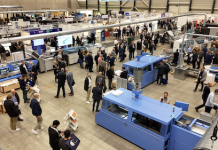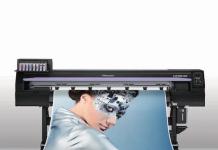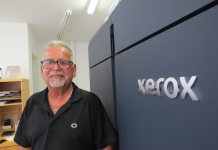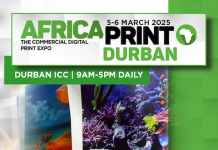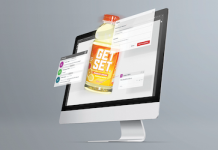Esko recently held its 2024 Packaging Trends webinar, where audiences could gain valuable insights from industry thought leaders, and stay ahead of the curve in the dynamic world of packaging.
Jan De Roeck, Esko Director of Marketing, Industry Relations and Strategy, who hosted the discussion, said that a recent survey (undertaken to identify the main packaging trends for 2024) illustrated that, in the packaging world, from an environmental and macroeconomic perspective, nothing much has changed, and that cost reduction remains one of the biggest challenges. ‘We still see speed to market as one of the big challenges, but standardisation and automation also seem to be recognised very much as the ways to get there.’
The majority of the survey’s demographics comprised brands/brand owners, with print service providers making up a smaller percentage, with the rest of the respondents identifying as ‘other’.
Chris Janczar, Product Manager for Esko’s WebCenter product, said, ‘The focus on sustainability is key. Consumers are demanding sustainability and governments are beginning to regulate sustainability pretty hard, (so) being innovative in this space and acknowledging that can really get you ahead, You can make sustainability profitable rather than just reacting to it, and going with the flow.’
Susie Stitzel, Esko’s Director of Product Management, said cost reduction stands out, ‘It’s been a concern of our customers for many, many years.’
Jijo Dominic, Esko’s VP Product Management, said digital transformation is trending in this survey, and that it needs to accelerate. He emphasised that there is an expectation of new ways to find digital transformation initiatives.
Richard Deroo, Esko’s technical manager for structural design, palletisation, and 3D solutions, spoke of the talent gap, and how to narrow that gap, adding that the demand for packaging professionals continues to outpace the available talent that is out there.
The Main Trends Included:
Cost Reduction
‘Cost savings in packaging development and production are really hard to find, said Stitzel. ‘Margins are already razor thin. But at the same time, we’re getting increased demands about quality. This is a tough line to balance. If we cut costs and cut our staff, will we still have the same amount and level of quality? Will we increase our costs if we try to deliver a lot of quality? It’s a tough balancing act. By implementing automation, especially for those tasks that are repetitive, we increase our consistency and we reduce our costs.’
Janczar said, ‘Finding the balance is key, because you can’t just cut costs short-term. You have to still make the investments that will cut costs long-term, where you’re able to take advantage of automation and AI.’
Deroo said, ‘With digital print, it’s all about shorter cycle times and quicker time to market. If you have collaborative design process platforms as well as 3D tools for 3D prototyping, for example, that allow customers to rapidly iterate the design cycle, this helps them meet that time to market demand, but it is also cost saving as well because they’re saving on time as well as resources, and being able to meet those demands.’
Sustainability
Survey respondents were asked how important environmental sustainability will be to their company in 2024. 75 percent answered either extremely important, or somewhat important.
‘Sustainability is like this big eco-friendly umbrella that has to encompass everything that we do in our business, from our hiring decisions to the investments that we make,’ said Janczar. ‘We have to embrace it and use it to influence the bottom line, to essentially make money through sustainability for our businesses.’
Deroo said, ‘The regulations as well as the consumer sentiment requires our customers to stay focused on sustainability.’ This could involve aspects such as saving on material usage and optimising the entire logistics and supply chain.
De Roeck added that in a report by McKinsey and Nielsen IQ, it was identified that packages and products that have a very clear environmental, social and governance (ESG) type of message on their label or on the package, or an environmental sustainability claim that is validated by numbers, actually sells more in retail, which means consumers are ready to spend more money if the product has that message.
Dominic added that it is important to ensure the content and the claims are clearly printed on packaging. Solutions like content management and centralisation will help brands to do this.
De Roeck also said that in the whole debate about environmental sustainability, there’s one really important driver: the legislator.
Stitzel said, ‘It’s clearly top of mind for legislative bodies to really push laws. They’re continuing to push laws to drive us more towards a circular economy. Just last month, the EU council agreed on a proposal to regulate packaging and packaging waste, and they were clearly focused on the entire life cycle of the packaging. They had certain laws, certain tactics requiring that all packaging be recyclable, setting reuse targets, and also restricting certain types of single use packaging, such as a plastic water bottles or something like that. They also extended this to extended producer responsibility criteria, which is really going to push brands to become even more focused on delivering on sustainable packaging.’
Digital Transformation
The survey also illustrated that companies are only somewhat satisfied with how they are managing packaging content and/or artwork. ‘It’s not surprising,’ said Dominic. ‘Everybody wants to solve the problem, but it’s not easy to solve. So, there is much more that can be done, and there is room for improvement.’ He added that more automation, more streamlined processes and speed to market can all be improved, provided that the problem is addressed.
Jancza said, ‘You need digital transformation in order to achieve automation. And then once you have automation, you have the time to work on bigger problems or bigger opportunities, and in that case, the bigger opportunity here is AI. If you’re not digitised, you can’t automate. If you don’t automate, you don’t have time to think about AI.’
He added that with AI, one can tap back into collecting the data. ‘AI is nothing if it doesn’t have data to work with. So, for instance, you have to automate content, (such as) regulatory content that has to go on packaging and labels etc, so that way you can take advantage of AI, which can look at the data that you’ve already got organised digitally.’ Stakeholders can then take advantage of being able to take content and automatically make sure it’s approved and put it on labels and on e-commerce sites.’
Stitzel said, ‘3D has an important role to play in digital transformation, from doing virtual mock-ups that are now becoming very commonplace, to doing consumer insight testing, AR and VR. All of those things help us take really time-consuming and expensive processes and remove a lot of cost and time out of the processes.’
‘It’s really interesting when we (combine) 3D and automation, we can see a much further digitisation going on. A really good example is the automating of pack shots, basically product images for e-commerce. We can take a 3D model and an approved piece of artwork and put them together to generate images directly for websites or e-commerce sites, and you can imagine what this means for speed to market. It’s done before the packaging has even been produced.’
In terms of metadata, Stitzel said, ‘When we talk about digital visibility, we’re really talking about real time insights into the entire process of packaging development and production. We can get a lot of insights because we’ve been digitised. A good example is using AI to assist with quality control tasks that are typically done manually. Another example would be being able to predict when we need to do maintenance before a piece of equipment goes down. All of those things together, those types of visibility, lets us reduce costs and improve efficiency all the way through the supply chain. Everybody knows what’s going on regardless of their role.’
In terms of the cloud, Dominic mentioned the power of three: cloud, AI and data. ‘That is a very interesting combination. The cloud brings dynamic scalability of computing power when we talk about AI, learning from the past and data. And when you feed that to a system with computing power and learning with a lot of data, you can actually start thinking about problems that we once thought we could not solve in the packaging industry. That is what you will see in 2024. It’s not about checking and digitising your checklist. It is about learning from past mistakes and preventing future ones. Those kind of solutions will come.’
Deroo said that maintaining and ensuring the privacy and the protection of customer information and customer data is key.
Talent Gap
It was also mentioned that companies need to be forward thinking and be able to close the talent gap, especially with so many jobs expected to being disrupted, as research and various international forums have outlined.
‘By promoting and fostering a workplace culture of diversity and inclusion, it’s going to help companies widen the net of available talent that they have access to. And that’s really going to help them be able to compete better in the market as well,’ said Deroo.
Janczar said, ‘I had a discussion recently with a customer, who’s in charge of hiring people, I asked him what he thinks about the talent gap and how he’s dealing with that. He said, ‘I have a degree in chemistry and I’m in the packaging field.’ What he looks for in an interview is trying to figure out how fast someone can learn. Since jobs are changing and they’re becoming dynamic, you’re really looking for a skill set of how fast you can adapt, how fast you can learn something, and how fast you can apply those learnings to be productive in your job. Traditionally, things such as degree and experience have a little less value in the future as jobs change than they did a decade ago.’
The results from the survey can be found in Esko’s Packaging Trend E-Book 2024.
ESKO DISTRIBUTOR:
KALIDECK
+27 11 688 6000
https://www.kalideck.co.za






